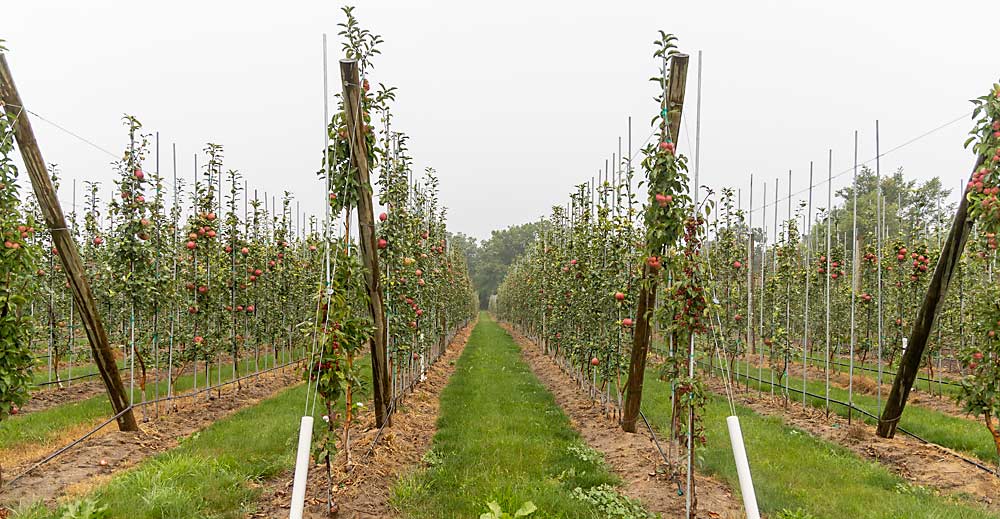
Growing high-quality apples for the fresh market and turning those apples into sweet cider are two distinct skill sets, but the Engelsma family in Michigan excels at both.
They’ve won the Michigan Apple Cider Contest a record eight times. Their high-density blocks were a highlight of the International Fruit Tree Association tour of greater Grand Rapids earlier this year.
“Their orchards are beautiful,” said Amy Irish-Brown, Valent sales specialist and former Michigan State University extension educator who helped organize the tour. “We thought their multileader systems would give growers something to think about.”
Attention to detail, in both their apple growing and cider making, appears to be the secret to the Engelsmas’ success.
The family’s orchards and cider mill, called Engelsma’s Apple Barn, are on the western edge of Grand Rapids. They’ve been farming the same land since the 1920s. Jim Engelsma Sr. first planted apple trees in 1956. Over the next few decades, the family bought additional land, planted more trees and packed fresh apples for Jack Brown Produce. Jim Sr.’s son, also named Jim, became a partner in 1985 and took over from his father about 20 years later. Now 91, Jim Sr. still trims trees and does other odd jobs on the farm.
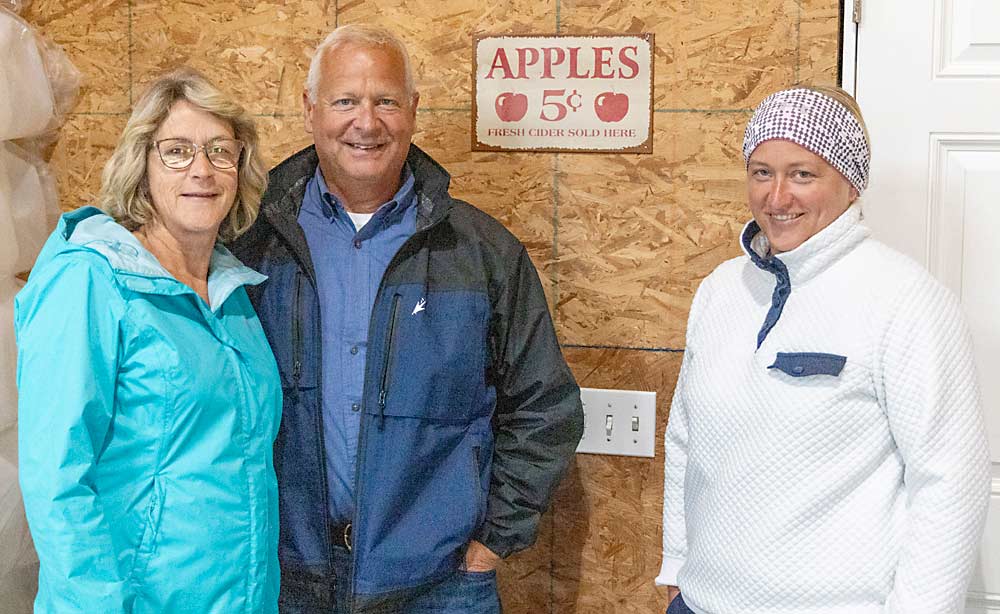
The principal managers today are the younger Jim, his wife, Becky, and daughter, Bridget. Bridget manages much of the cider production, with lots of help from her siblings and cousins. For the past 10 years, Jim has split his time between the family business and as a location manager for agricultural supply company Nutrien Ag Solutions. The Engelsmas hire local people to work in the cider mill and a crew of eight H-2A workers for apple harvest.
Cider success
Jim first made apple cider as a hobby, then he expanded to small-scale, direct-market sales. When customers kept asking for cider, the family decided to replace their old packing line with a cider-making facility in 2004. During harvest, they make up to 2,000 gallons of sweet cider a day, which they sell to two dozen retailers in greater Grand Rapids.
Jim said they make their cider the same way everybody else does. They squeeze the apples with an accordion press and use ultraviolet light to kill pathogens. If there’s a secret to their cider’s success, it’s cleanliness, quality and freshness. Some strategies they shared:
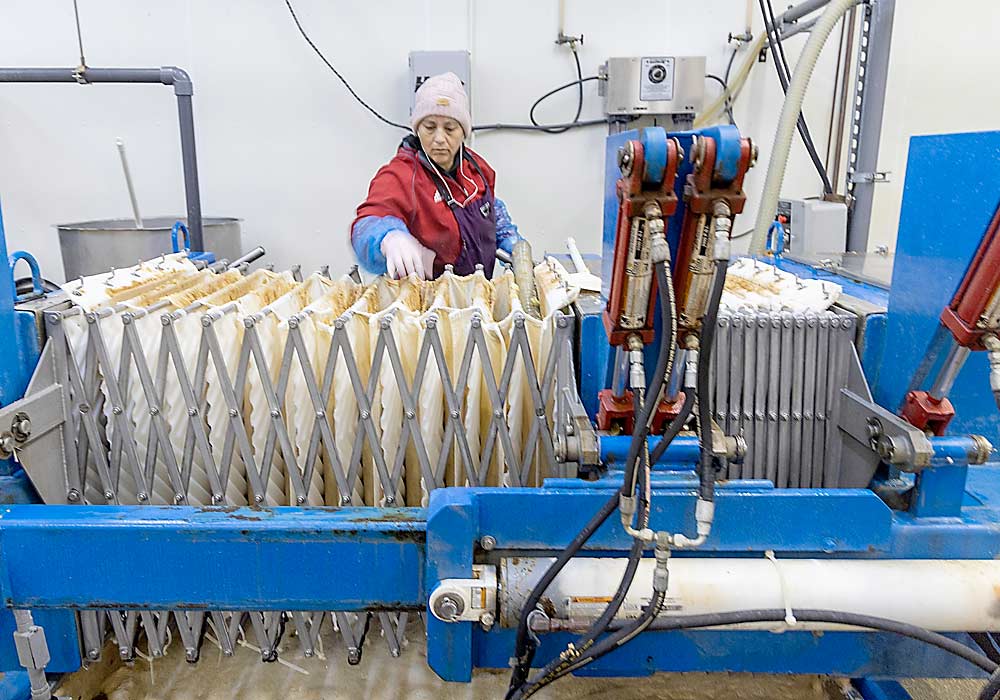
—The mill is cleaned before, during and after each run and at the end of each day.
—When evaluating apples (Gala, Jonagold, Golden Delicious and Jonathan are the major contributors), Bridget tells the cider workers: “If you wouldn’t eat it for lunch, it doesn’t go in the cider.”
—They don’t add preservatives. The cider is made with apples only and is delivered fresh to retailers. If kept cold it can last three weeks, but it should be sold within two weeks. “I don’t keep anything sitting around,” Bridget said.
The family sells cider and apples from a retail stand in Grand Rapids on fall Saturdays. It’s something of a family tradition for the younger generation to work the stand, but direct sales are only a small part of the family business.
They’ve thought about expanding direct sales or maybe even building a full-scale farm market, but their business structure works for them — and already keeps them plenty busy.
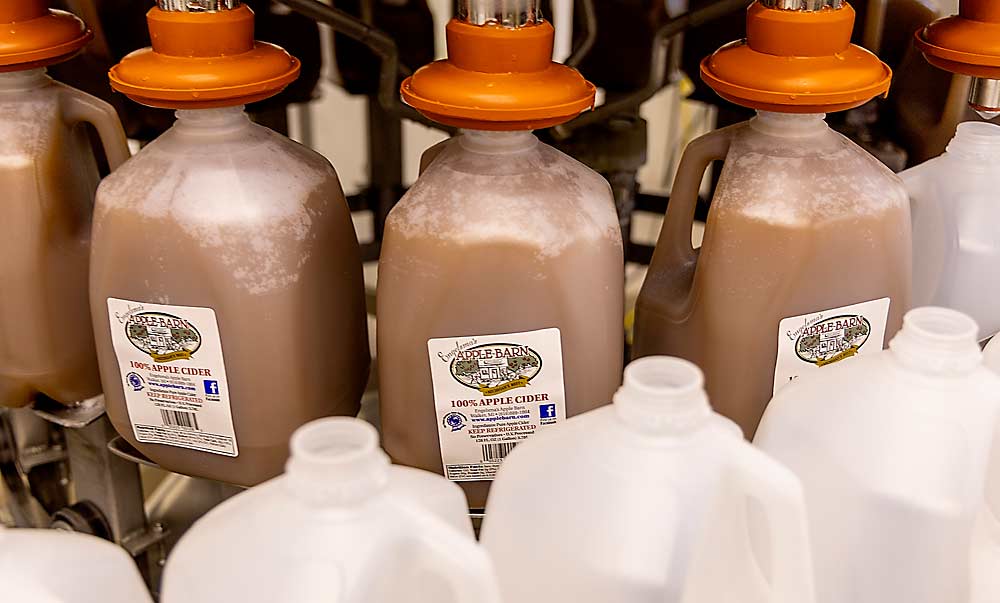
And their customers seem more than happy to take advantage of the Engelsma reputation. Schwallier’s Country Basket, an orchard and farm market in nearby Sparta, only sells Engelsma cider because of the family’s “absolutely excellent cider and service,” said grower and co-owner Phil Schwallier.
Progressive orchards
The Engelsmas grow 75 acres of apple trees, with five more coming into production. Nearly 10 of those acres are freestanding trees used to supply cider apples. Most of the high-density orchards are Gala and Honeycrisp, with the recent addition of Ambrosia. Some of the newest blocks are extremely tight, multileader plantings with the goal to boost yields and apple quality.
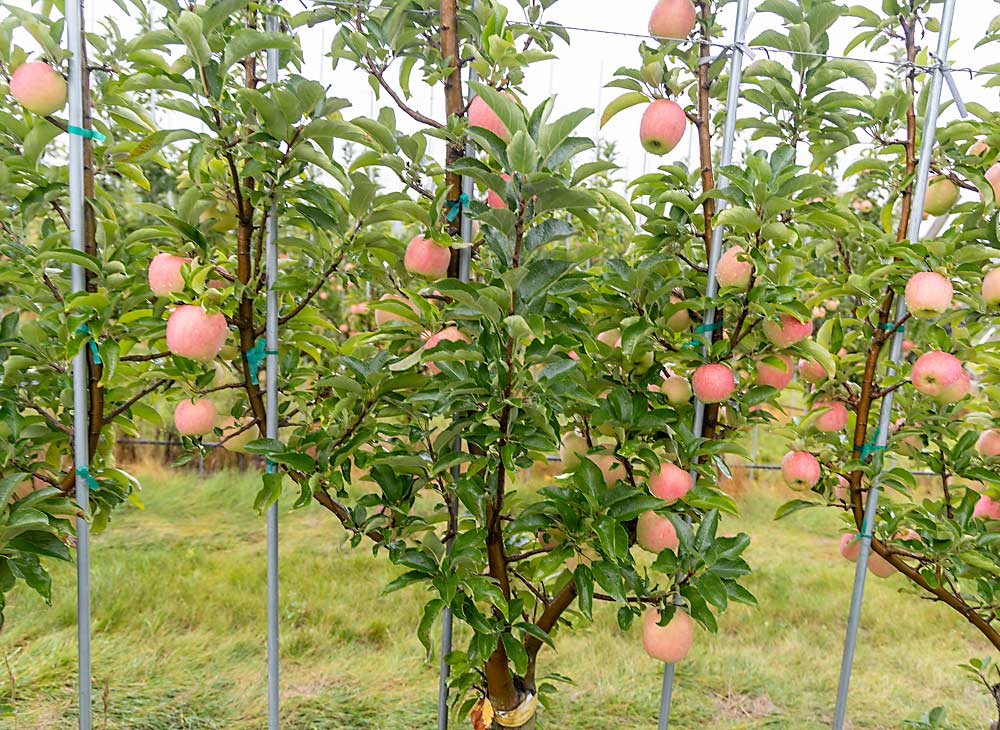
Multileader systems are on the cutting edge for Michigan orchards, Irish-Brown said.
“The hardest thing to get right is to have uniformity from leader to leader,” she said. “Apple trees always want to have one dominant leader.”
The Engelsmas achieve uniform leaders through strict attention to detail — pruning, fertilizing and keeping everything balanced, Irish-Brown said.
During a September visit with Good Fruit Grower, Jim displayed a 5-acre block of double-leader Honeycrisp trees, with the leaders spaced 8 feet by 1.5 feet on Budagovsky 9 rootstock. There are 4,000 leaders per acre. The block was planted in 2020 and will be in full production next year.
Another multileader block features Ambrosia top-worked onto B.9 in 2020, spaced 12 feet by 3 feet. Each tree has three leaders, spaced 1 foot apart in a two-dimensional canopy. It’s a “very intense” system, he said. Winter pruning stimulates too much growth, so they focus on summer pruning to keep the trees small but producing high-quality fruit. Jim said the block will reach full production this year. In September he was expecting more than 1,000 bushels per acre of extremely high-quality apples.
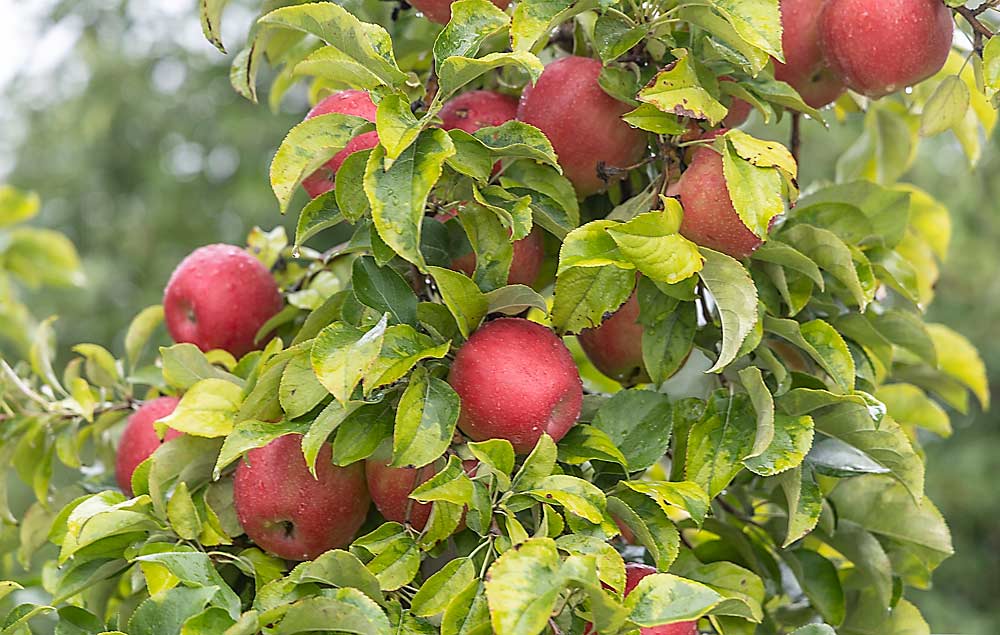
They drip-irrigate their high-density blocks and “spoon feed” micronutrients through the drip line — fertigating biweekly rather than once or twice a year.
“We’re micromanaging fertilizer to the point where if anything goes wrong in the orchard, we can stop applications and start to shut the tree down,” Jim said. “It’s a more fine-tuned approach.”
Using these methods, their two-leader trees have grown an average of 40 inches per leader during the establishment phase, he said.
The Engelsmas and their workers are in the orchards every evening, planning for the next day. They document all of their chemical, fertilizer and plant growth regulator applications. They also leave check trees untreated to measure the progress of their practices. It’s all done to grow better apples, a job that isn’t getting any easier.

“You need high-quality fruit that’s going to return on the dollar to justify your inputs,” Jim said. “What we’re doing today, we’ve got to do better tomorrow.”
—by Matt Milkovich







Leave A Comment